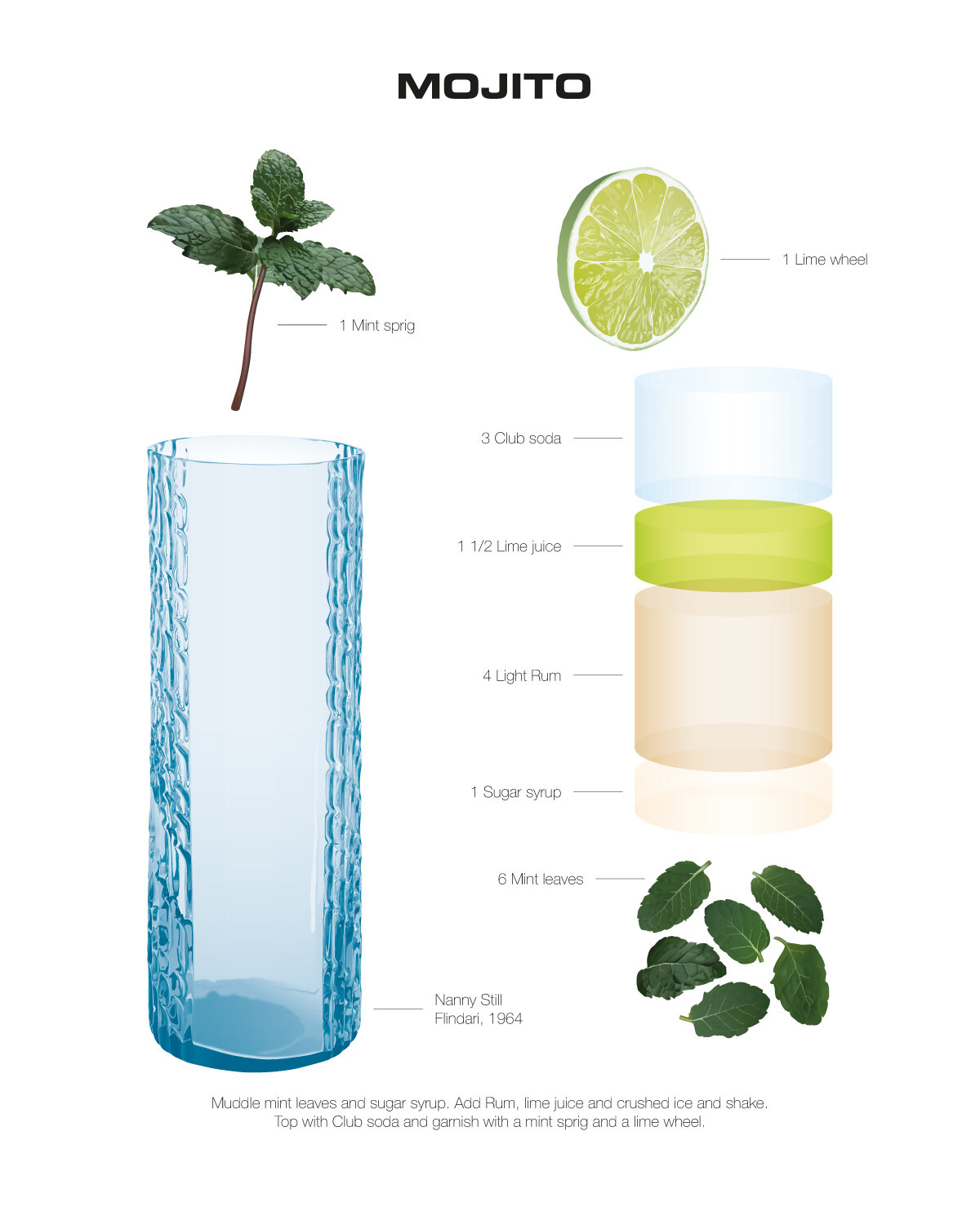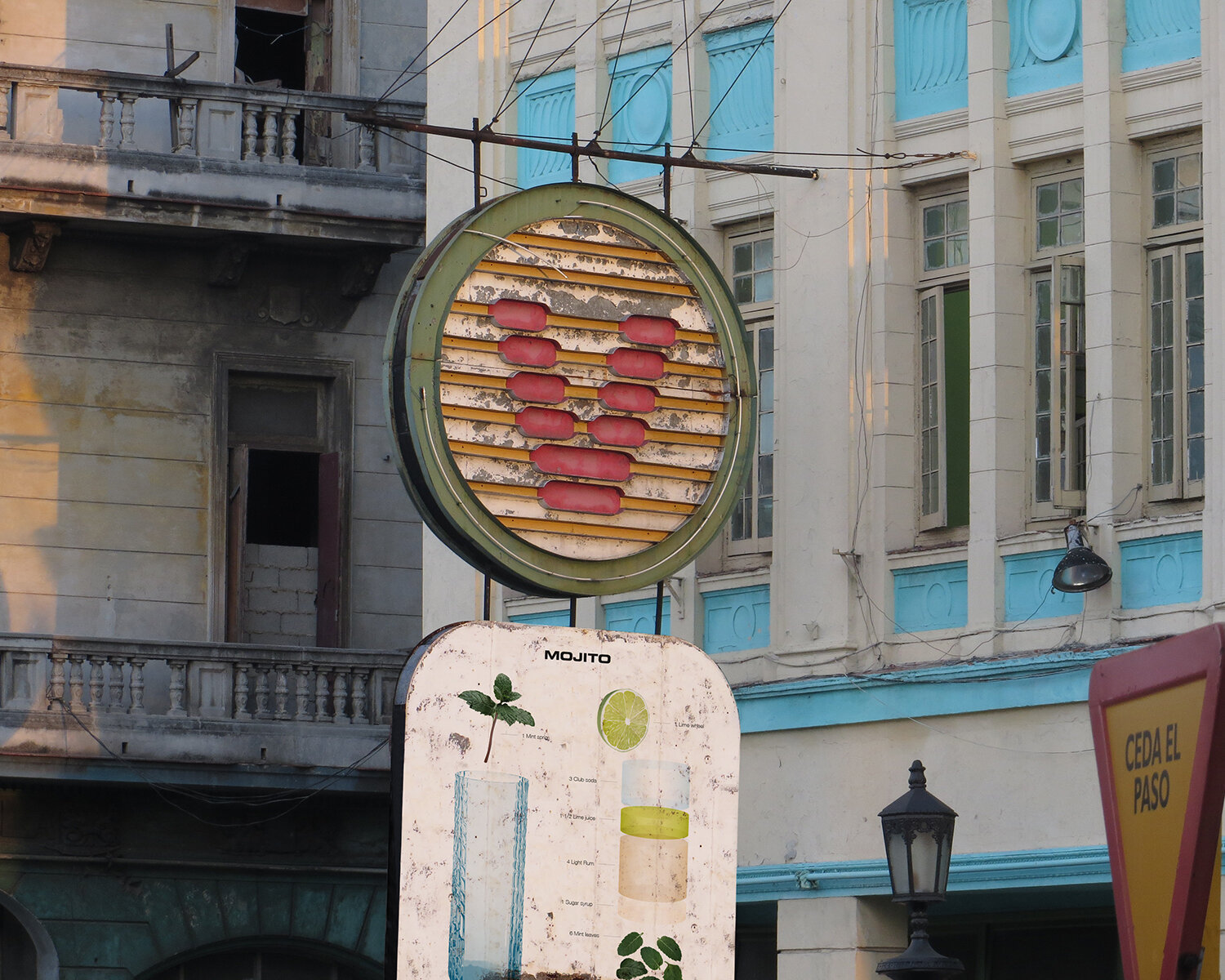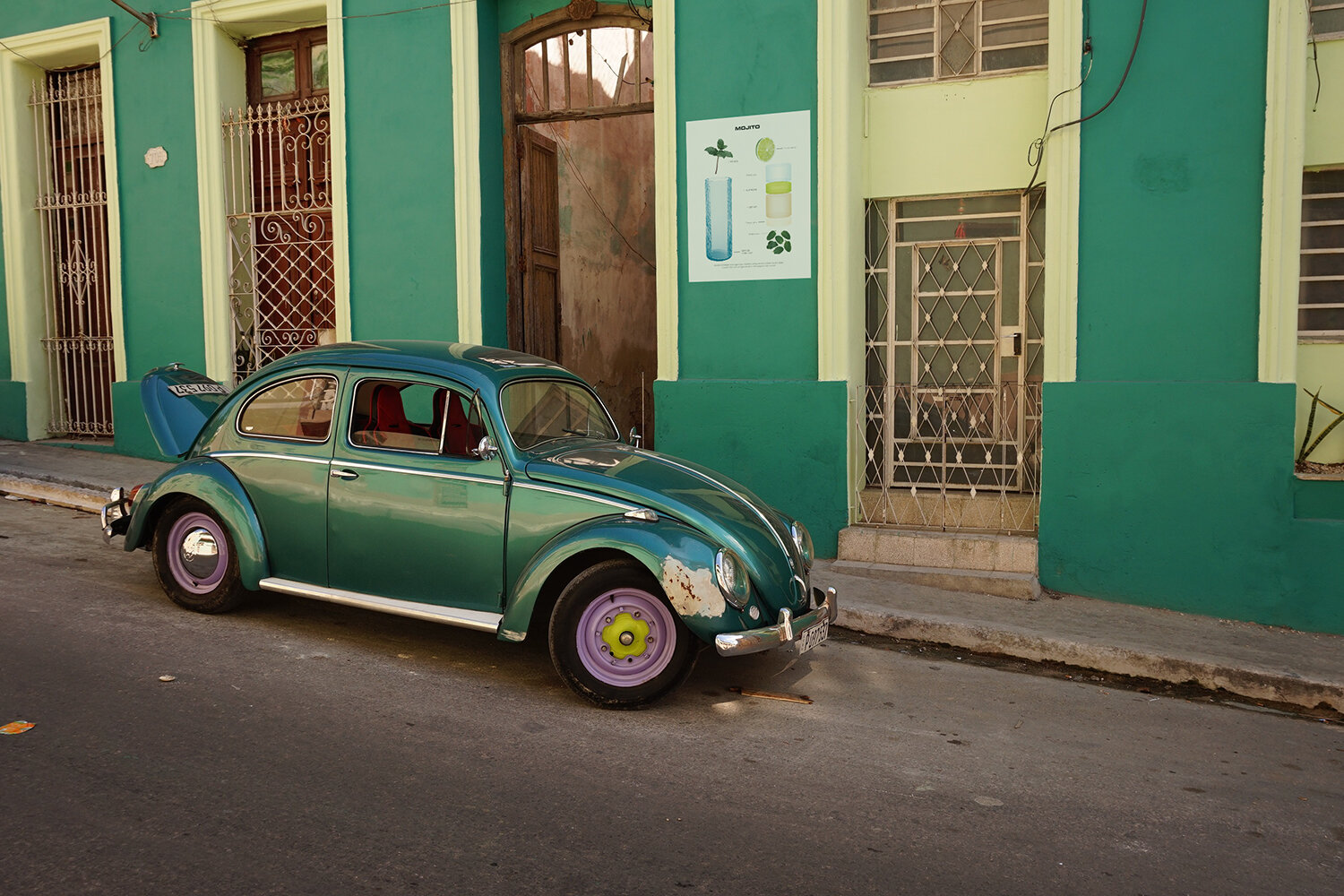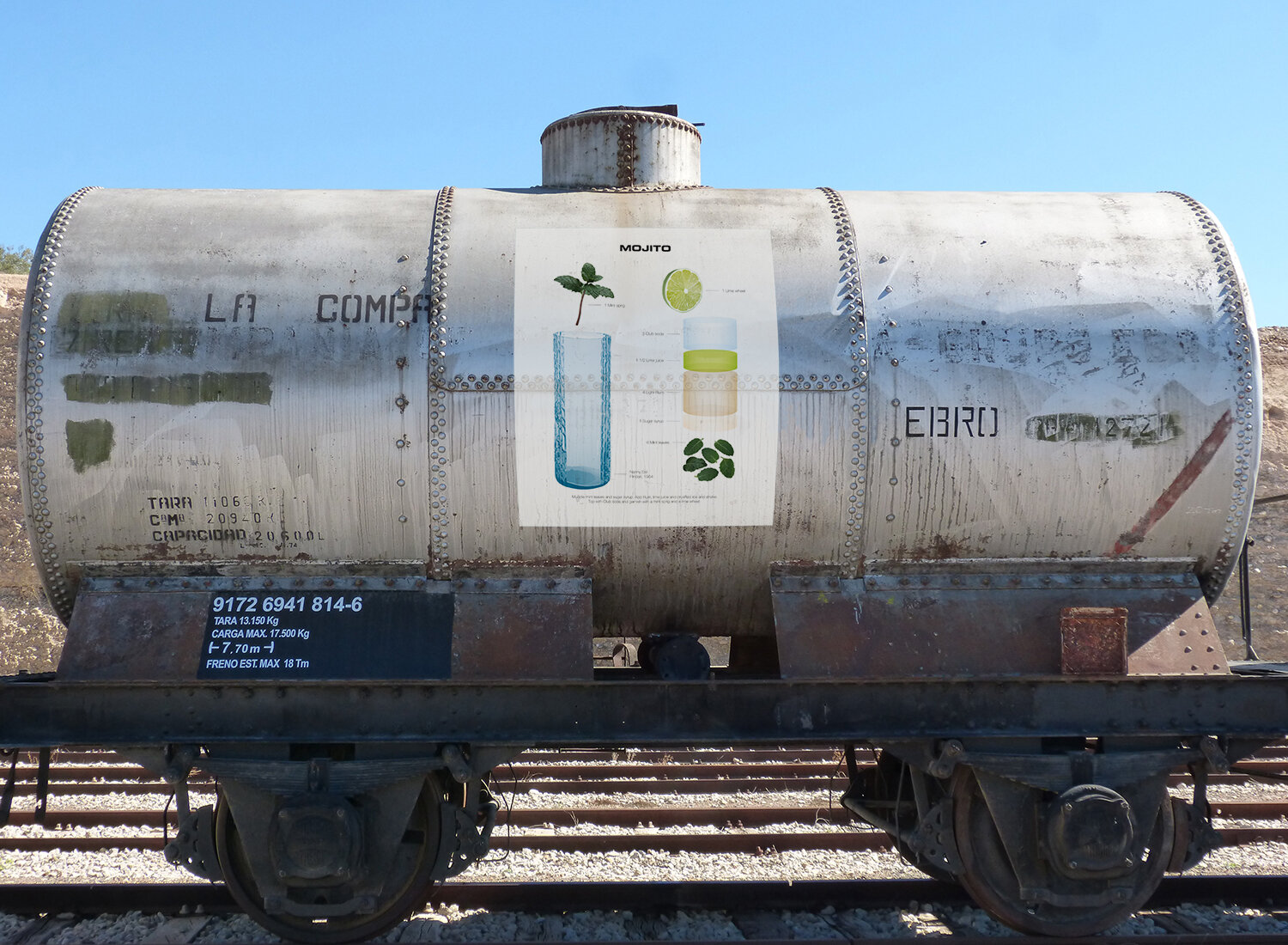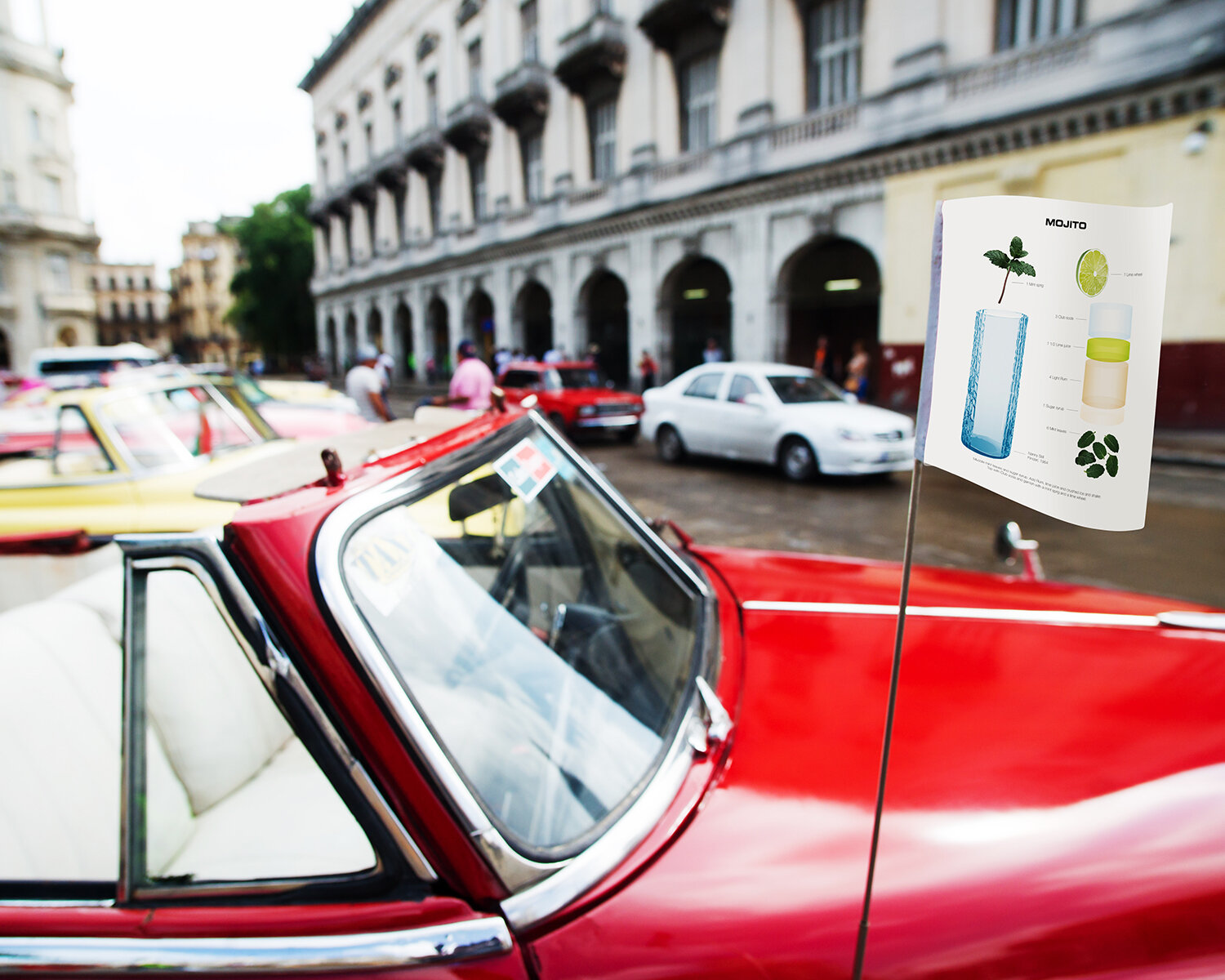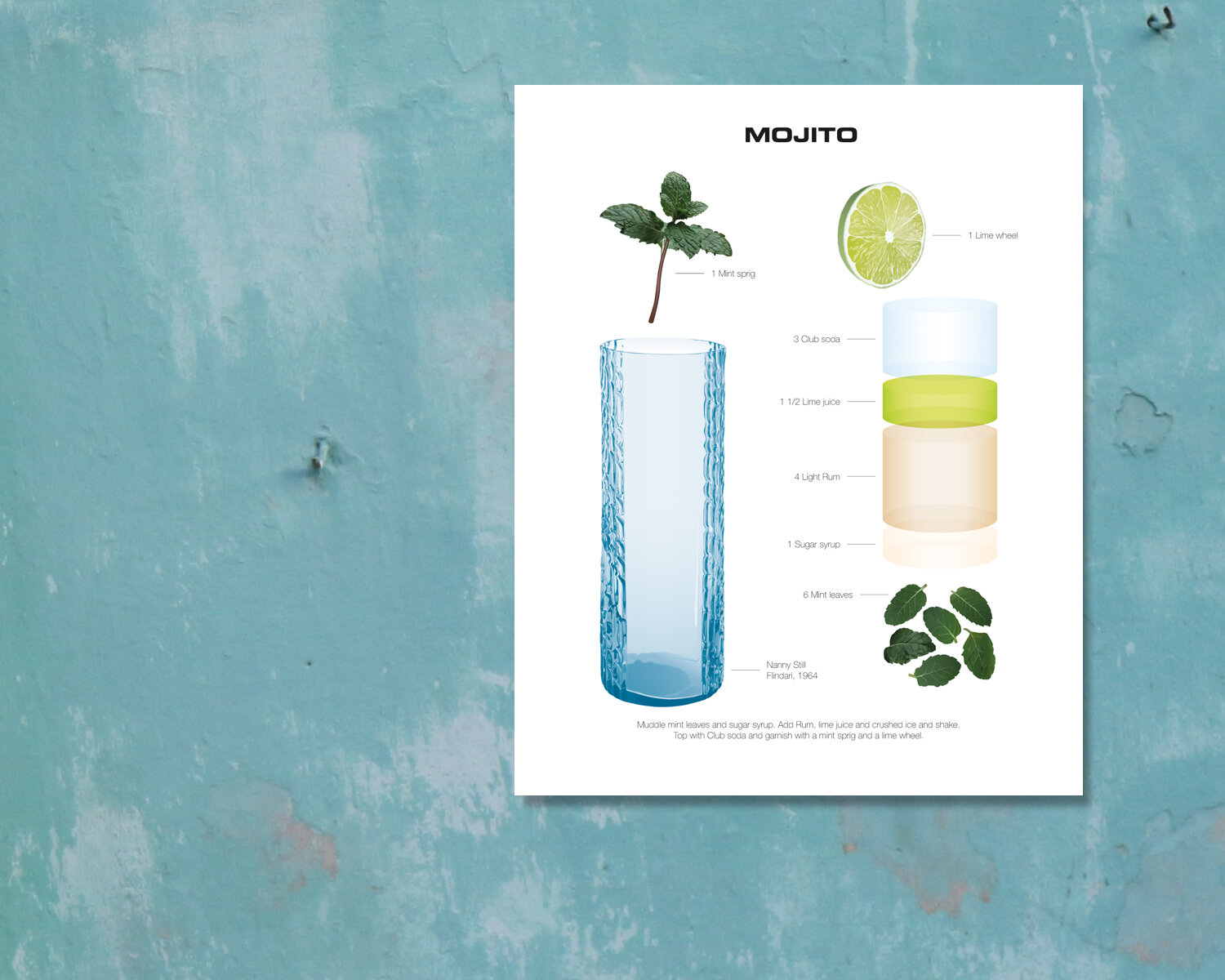The Piña Colada Day was declared a holiday by Ricardo A. Cofresí in Puerto Rico in 1978, in honor of the drink, now known as a symbol of Caribbean culture. The best place to experience it is definitely at its birth place at the Caribe Hilton in Puerto Rico.
THE PIÑA COLADA
Piña Colada, means strained pineapple, and is referring to the freshly pressed and strained pineapple juice in the drink. The first time a drink named Piña Colada was mentioned in print was in an issue of Travel Magazine from December 1922. It was made with Bacardi Rum, pineapple juice, lime and sugar but most importantly, it did not include coconut. The name however, fits very well with this pineapple cocktail.
Nowadays, a Piña Colada is generally thought of as a creamy coconut-tasting drink and the original is usually referred to as a Cuban-style Piña Colada. The modern Piña Colada was invented on August 15, 1952 (the Caribe Hilton say 1954), after three months of hard work. Ramón “Monchito” Marrero Perez, the head barman at the Caribe Hilton in Old San Juan, Puerto Rico was trying to create a signature cocktail for the hotels Beachcomber Bar. He eventually landed on the Piña Colada possibly just adding Coco López cream of coconut, a new product in Puerto Rico at the time, to the existing Cuban drink. The change was big enough though to be considered an entirely new drink.
For 35 years Mr. Perez personally served Piña Coladas at the Caribe Hilton, making it so popular it was made the official drink of Puerto Rico in 1978. In 2004 the Caribe Hilton was presented with a official proclamation signed by Sila María Calderon, the Governor of Puerto Rico, in honor of the 50 year anniversary of the famous cocktail.
THE DESIGNER
The glass was designed by Agustina Bottoni in 2020 and is called High Spirits.
When Snail Mail Got Faster
Sending messages by air started a very, very long time ago. It was the Egyptians that figured out how to use pigeons for the job around 3,000 B.C. It took almost 5,000 years until a the son of Benjamin Franklin, William Franklin, in 1784 used the, at the time, ultra modern hot air balloon to send a letter to his son William Temple Franklin on the other side of the English Channel. Using balloons never did catch on though, since they aren’t very reliable, so as far as airmail went, pigeon post was the best option. That is until the first airplanes came along.
The first recorded use of mail by airplane was three letters sent from Petaluna to Santa Rosa in California on February 17, 1911. But since the postmaster wasn’t involved the first official use of airmail was the very day after when Sir Walter Windham in India convinced the Indian postmaster general to let him operate an airmail service.
Cuba started their own airmail service in 1930 and this is where we get to the Airmail cocktail. Shortly thereafter the Bacardi Rum Company issued a pamphlet, Bacardi and Its Many Uses, promoting a cocktail called the Airmail, possibly to celebrate this event. The original drink was elegantly garnished with a real postage stamp.
During the 1940’s the Airmail started appearing more commonly in bartender guides like in W.C. Whitfield’s 1941 book, Here’s How, where he described the drink as “It ought to make you fly high”. The Airmail also appeared in David Embury’s 1948 The Fine Art of Mixing Drinks and in Esquire’s 1949 Handbook for Hosts.
The glass was fittingly designed for Scandinavian Airlines in 1998 by the Swedish designer Gunnar Cyrén.
Airmail
2 oz Gold Rum
1 oz Lime juice
1 oz Honey syrup
3 oz Champagne
1 Lime twist
Shake rum, lime juice and honey syrup until well chilled. Strain into chilled glass, top with champagne and garnish with a lime twist and/or a postage stamp.
Happy Midsummer From Martinique
When most Swedes celebrate Midsummer by drinking schnapps and eating herring let’s talk about a cocktail being almost as strong as a schnapps, the very potent French Caribbean, Ti’ Punch.
Wherever you find liquor and lime you will find them combined in a drink. The Daiquiri in Cuba, the Caipirinha in Brazil, the Pisco Sour in Peru and Chile and the Ti’ Punch in the French Caribbean. In this particular drink Rhum Agricole is the main ingredient, a rum distilled from freshly pressed sugarcane juice rather than leftover molasses from sugar refining, normally used in rum production. This makes for a grassier, some say rougher, rum with a very distinct character and this particular rum distillation is unique to the French West Indies. Another difference that makes Rhum Agricole stand out is that it is generally 100 proof. This fact combined with the small amount of lime juice in the Ti’ Punch compared other rum sours, the use of cane sugar syrup and the lack of dilution from ice makes for drink quite different from the smooth Daiquiri.
The history of the Ti’ Punch dates back to when French colonists started sugar cane plantations in Martinique and Guadeloupe during the 17th and 18th century. The drink was probably created by the sugarcane fieldworkers to raise their spirits during a hard days work. The Ti’ Punch is so connected to the islands, especially to Martinique, that they made it their national cocktail. Ti’ is Creole for petite so the Ti’ Punch quite literally means small punch. Since there obviously were no ice in the sugarcane fields a purist would still never dilute the drink with ice.
When traveling to Martinique or Guadeloupe you will find the Ti’ Punch everywhere, often presented for you to prepare yourself to. There is even a saying in Martinique “Chacun prépare sa propre mort” or “Everyone prepares their own death”.
The Bamboo Grove glass was designed by Anna Perugini in 2020.
Have a fantastic French Caribbean Midsummer!
A Taste of the Caribbean
The Painkiller is essentially a riff on the Piña Colada, created in Puerto Rico in 1954. The only difference being the addition of orange juice and nutmeg. It was first made some twenty years later by Daphne Henderson, owner of a small bar called the Soggy Dollar Bar at White Bay on the island of Jost Van Dyke in the British Virgin Islands. The bar got its name due to the fact that White Bay lacked a jetty and the patrons usually swam to shore from their boats and ending up with a pocket full of wet bills.
One of the frequent guests enjoying the Painkiller was Charles Tobias, founder of Pusser’s Rum. Even after becoming friends with Daphne Henderson he tried to get her to reveal her secret concoction but she persistently refused. After two years he finally snuck a drink from the bar, brought it home and started experimenting on his own to recreate the drink. The following Sunday he was back and challenged Ms Henderson to a $100 bet and taste test among the ten customers at the bar to settle which version was better. A bet he won.
Originally the drink was made with Cruzan Rum, a product of the US Virgin Islands(Pusser’s Rum Ltd. didn’t start until 1979 and wasn’t around when the Painkiller was created), but in 1989 Charles Tobias managed to file a US trademark on the name and recipe for the Painkiller making it illegal to call it a Painkiller if it’s not made with Tobias’sown Pusser’s Rum. In 2011 Pusser’s Rum even took a New York Tiki bar named Painkillerto court both for using the trademarked name and for serving Painkillers made with rum other than Pusser’s. This in turn led to bartenders across the US to boycott Pusser’s.
The glass, called Ripple Cup, was designed in 2019 by French-American designer Sophie Lou Jacobsen.
Painkiller
2 parts Navy or Dark Rum
4 parts Pineapple juice
1 part Orange juice
1 part Coconut cream
1 Pineapple wedge
Freshly grated nutmeg
Shake with ice and strain into ice filled glass. Garnish with a pineapple wedge and freshly grated nutmeg.
Enjoy it like you are in the Caribbean.
Something Cool From Jamaica
If winter doesn’t cool you down, try this fantastic libitation from Jamaica, I bet Ian Fleming did when writing his spy novels.
One recipe for a Planter’s Punch never seems to be the same as another. It can be anything from a simple (probably the closest you’ll get to the original) Jamaican rum, lime juice, sugar syrup and water to a fruit punch with added orange juice, pineapple juice, grenadine, bitters and Falernum.
The origin, as with most old cocktails, is uncertain but it seems likely that the Planter’s Punch originated in Jamaica in the late 18th-century as a way to stay cool while working under the Caribbean sun.
The drink first appeared in print in 1878 in a London magazine called Fun. This recipe was more of a verse than a modern day recipe and called for one part lemon juice, two parts sugar, three parts rum and four parts water. You will often hear that the Planter’s Punch was created by Myers’s Rum company in Jamaica but if the recipe really was published in 1878 that would have been difficult since Myers didn’t start their operations until 1879.
The Planter’s Punch was incredibly popular until Prohibition when it fell out of fashion. It did however come back in a big way after WWII when Donn the Beachcomber and Trader Vic both put it on their menus, adding som ingredients and turning it into a Tiki drink.
The glass was designed by Patricia Urquiola in 2016 and is called Trama.
Planter’s Punch
3 parts Jamaican Dark Rum
2 parts sugar syrup
1 part lime juice
2 parts club soda.
Shake all ingredients except club soda with ice. Strain into ice filled glass and garnish with a mint sprig.
December 10 – Hurricane
The Hurricane is another true classic of New Orleans even though there is said to have been a cocktail called Hurricane served at the 1939 New York World’s Fair in Queens. Little is known about this version apart from it probably being made with rum and that it was served in a hurricane glass.
The second time a cocktail called Hurricane saw the light of day was at Pat O’Brien’s in New Orleans during the 1940s. This is the version that is still served today and it came into being out of necessity. During and after WWII Scotch and Bourbon were hard to come by but New Orleans had rum arriving from the Caribbean by the boatload. The spirits distributors thought up a clever way to deal with this. They required the bars to buy several cases of rum with each case of Scotch. This left Pat 0’Brien’s with more rum than they knew what to do with. Benson “Pat” O’Brien and his partner Charlie Cantrell, probably together with their head bartender Louis Culligan, decided to create a new cocktail to help use up the excess cases of rum. A potent cocktail with 4 oz (120 ml) rum.
The hurricane glass, giving the cocktail its name, is modeled after the classic hurricane lantern. This glass is called Riflesso and was designed by Isabel Antonia Giampietro in 1958.
From El Draque to Mojito
In 1586 Sir Francis Drake sailed into to Havana Cuba. He was sent on a mission by the British Crown to the Spanish colonies in the Caribbean to plunder their gold. The reason he came to Cuba was another. His crew was suffering from scurvy and dysentery and they needed to find a remedy. The locals brought him Aguardiente (an early form of rum), lime, mint and cane juice, a concoction they started to call El Draque, the name they gave Sir Francis Drake. The drink did not however cure himself and Sir Francis Drake died of dysentery outside Panama in 1596.
The later name Mojito might have derived from the Cuban mojo, a sour citrus sauce made by African slaves.
This blend of alcohol, lime, mint and cane juice was most likely drunk by slaves on the Caribbean plantations to help with their own ailments long before Drake came to try it. But not until the American Prohibition when the American cocktail party moved to Cuba the drink started being served as a highball with soda and the Mojito as we now know it was born.
The highball glass was designed by Finnish glass designer Nanny Still in 1964 and is called Flindari.






































